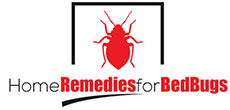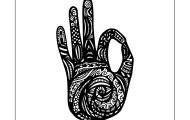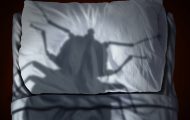 Bed bugs infestation is unpleasant and bothersome. Bed bugs are a nasty and uncomfortable problem. Bed bugs symptoms can be difficult to detect at first, treating them is even more challenging. With so much similarity, bed bug bites can be mistakes as other insect bites such as mosquito bites.
Bed bugs infestation is unpleasant and bothersome. Bed bugs are a nasty and uncomfortable problem. Bed bugs symptoms can be difficult to detect at first, treating them is even more challenging. With so much similarity, bed bug bites can be mistakes as other insect bites such as mosquito bites.
To confirm bed bug infestation, here are five palpable symptoms to help you detect bed bugs existence:
- Itchy Rashes
People usually don’t even realize they’re living with bed bugs until they’ve left some symptoms. Bed bugs bites leave apparent red rashes in clusters or in a line. These red welts on the skin are the first sign of bed bugs. Their bites are severely itchy and irritating, and constant scratching can cause bleeding and infection. Bed bug bites symptoms are usually unfelt at first that other people will not experience any symptoms at all. Appearance of symptoms can range from minutes to days after the bite. The rashes caused by bed bugs are associated with localized itching and red lesions which look like a raised welt. Normally, these skin rashes will clear after one to two weeks.
Recurrent bites create more visible symptoms and some people may develop blisters or skin infection from extreme scratching of the skin. On rare conditions, a severe allergic reaction to bed bug bites may develop. This can lead to:
- Wheezing
- Chest pain
- Throat constriction which makes swallowing difficult
- Inflammation of lip or tongue
- Lightheadedness
- Itchy rashes on different parts of the body
- Fever
Other effects include insomnia and anxiety from severe infestations.
Bed bug bites can be treated at home most of the time. But in cases of systemic allergic reactions, consulting a health-care professional would be the best option.
There are no definite treatments for bed bug bites as they would typically disappear after one to two weeks. It is the intense itching sensation that you need to relieve. To alleviate itching, you can apply over-the-counter antihistamine creams such as diphenhydramine. If none of these are at hand, you can also apply a hot washcloth over the affected area, this method can also relieve itching. As much as possible, never scratch the skin in order to avoid skin breakdown that can lead to bacterial skin infection.
Applying corticosteroid creams such as hydrocortisone to the affected area can also help you deal with the itching and infection. If symptoms still persist and a severe bacterial skin infection develops, evaluation by a health-care professional may be needed.
2. Sleepless Nights
Bed bugs are nocturnal creatures and they typically attack sleeping people during nighttime. The irritating itching and bed bug bites and anxiety it causes can lead to insomnia or sleepless nights. Just the thought of lying in bed next to bed bugs is repulsive enough not to give you a good night sleep.
3. Bites on Arms and Shoulders
Arms and shoulders are those parts most exposed when we are sleeping. Bed bugs normally attack these uncovered parts easily. Chiggers and fleas aim to bite around the ankles, so if you wake up having bites on your arms and shoulders, they’re most likely bed bug bites.
4. Bed Stains
Another obvious symptom of bed bugs is the bed. This is the very area where they dwell and hide because they can have the easiest access to their host when it is time to feed at night. If you see sheds of bug skin or their feces within the layers of your mattresses, chances are, your bed is harboring these pesky insects.
- Stale Smell
Bed bugs emit a strong, nasty, and stale odor. This is because they release pheromones and the larger their population, the musty smell becomes stronger.
How to find the symptoms?
Detecting the symptoms is another challenge for homeowners who want to prevent or eliminate bed bug infestation. Here are some tips to guide in you finding the symptoms:
· Inspect the Bed
Remove the mattress from the box spring and carefully examine the rims and seams with the use of magnifying glass and flashlight. Look for molted bed bug skin, feces stains or exoskeleton remains.
· Inspect the Room
After you’ve done inspecting the bed, it’s time to check the rest of the room. Search everything including chairs, sofas, curtains and under the carpets. Bed bugs prefer dark places are their hiding place so you can also look behind dressers, under the bed and the area behind the headboard. Take notice of the symptoms while searching for these areas.
· Check the Closet
Bed bugs are transported from place to place by clinging to clothes and belongings. Always check your closet for possible bed bugs and inspect your clothes thoroughly.
· Use your sense of smell
As explained before, bed bugs produce a strong musty smell and one way to detect their existence is tracing this particular scent.
It is crucial to know bed bug symptoms and how to find them in order to move on to the next stage of eliminating them.
If you find these symptoms manifested on your body and home, you have confirmed bed bug infestation. Depending on the degree of infestation, there are several ways and methods to get rid of bed bugs.




